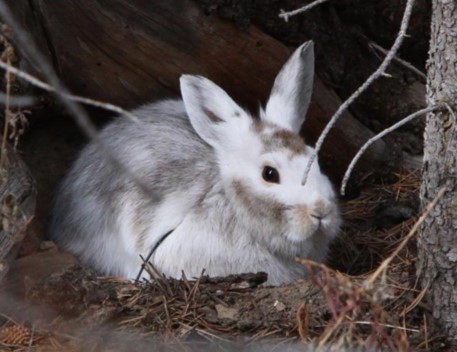Podcast: Play in new window

BOB HIRSHON (host):
A hare-y problem. I’m Bob Hirshon and this is Science Update.
Snowshoe hares turn white in winter to hide from predators. But as winters have grown shorter. warmer, and browner, the hares haven’t been able to respond by postponing their molt. Now, researchers tracking the animals in Montana report in Ecology Letters that this climate change induced mismatch comes at a cost.
L. SCOTT MILLS (North Carolina State University):
Hares that are white against a brown background are a lot more likely to be killed by predators than animals that are matched and this was all based on field observations of radio-collared hares.
HIRSHON:
That’s North Carolina State University biologist Scott Mills. He says it’s not yet known whether the hares molting pattern might eventually change to match the warmer climate. But ensuring that the hare population remains large, well-connected, and free of other stressors should help it thrive, even in the face of climate change. I’m Bob Hirshon, for AAAS, the science society.
